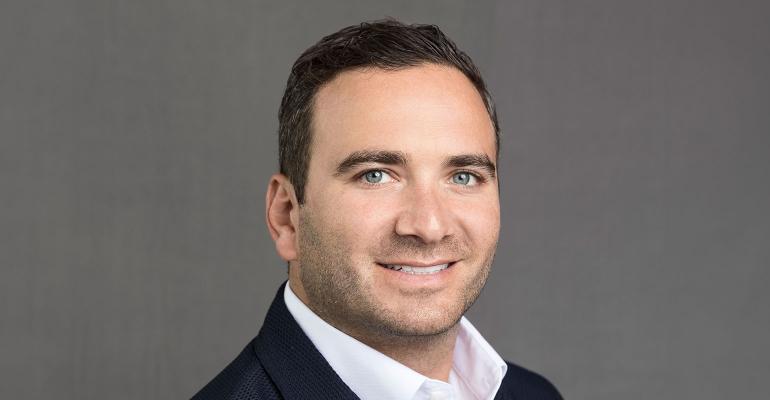Schechter Investment Advisors, a third-generation wealth advisory and financial services firm, was founded by Robert Schechter in the 1970s, who was previously one of the top insurance salesmen at New York Life before creating the firm.
The Birmingham, Mich.-based firm is one of the fastest-growing RIAs, landing on WealthManagement.com’s RIA Edge 100 list for 2024.
Aaron Hodari, the chief investment officer and managing director, provides a peak inside the $3.45 billion RIA’s moderately aggressive model portfolio.
The following has been edited for length and clarity.
WealthManagement.com: What’s in your model portfolio?
Aaron Hodari: I’ll start by saying our models are not fixed as far as asset allocations, so our typical portfolio is more risk-targeted. Asset allocations within models may shift depending on where we see the markets and where we see opportunities. A typical model of a moderately aggressive portfolio might be 60% equities, 20% fixed income, and 20% alternatives.
A public equity portfolio is going to be index-based, and depending on the size of a client’s portfolio, we’re either going to be using direct indexing or ETFs. Now, if it’s a larger client meets the minimums needed for direct indexing, we’ll do that. Otherwise, we’ll be building a very similar exposure via ETFs.
We are not typically actively making big changes between growth and value, small-cap, international. We would like to have a very long-term-focused allocation that includes large caps, small caps, domestic and international value, and growth, with a broad representation of the global equity markets.
We are going to include private equity within that equities bucket. So, instead of being 60% public equity, it might be 45% public equity and 15% private equity, but private equity is not appropriate for every client. But we are believers that it’s a diversifier and potentially can enhance returns.
On the fixed-income side, we typically use mutual funds and ETFs, and we are pretty active in managing both interest rate and credit risk. There will be times when we will be very short duration, and then we might, over time, increase the duration within fixed-income portfolios.
WM: Which way are you leaning right now in terms of duration?
AH: The last four or five years, we have been extremely short duration. Over the last year, we have started slightly increasing duration to lock in these higher yields for longer. However, we by no means have gone long or even intermediate. The aggregate of our fixed income is still going to be on the short-duration side.
The reason we have started to extend is that there are opportunities today to lock in these higher yields for longer. On certain asset classes, like municipals, specifically high-yield municipals, you are seeing higher yields as you go out longer on the curve. That’s not necessarily true in other markets, so it depends on the client, but we’re starting to see opportunities to lock in higher yields that are attractive enough for longer.
WM: What does the alternatives allocation look like?
AH: The rise of interval funds and product innovation in the alternative space has allowed the usage of alternatives to be used much more in client portfolios than maybe they could have been 10 years ago. We can even use interval funds within UMAs. Our clients typically have around 20%, and we are mainly focused on private credit today. There have been times in the past when we’ve included real estate, but we’ve been much bigger users of private credit for the last four or five years within our baseline portfolios.
WM: What opportunities do you see in alternatives and private credit specifically?
AH: If a client can handle the illiquidity that comes with the asset class, historically, that is a good trade-off, and we’re seeing yields today in middle-market direct lending north of 10%. The majority of private credit is floating rate, which has been very beneficial over the last four years. As you’ve seen rates creep up, it’s been a tough environment for fixed income, and the private credit market has benefited from its floating-rate nature as well as, to date, with relatively low default rates.
Now, that’s a risk because these are typically sub-investment grade credits, and so you have to, as an advisor and as a client, be aware of the credit risk you’re taking within the private credit markets. You have to monitor what’s going on within the default rate and the loss rate environment, but it has not been terribly alarming to date.
WM: What’s your investment philosophy, and how is it differentiated in the marketplace?
AH: We are long-term investors. We believe that if you build a good portfolio, you pay attention to taxes, you pay attention to fees, and you stick with it, you should do well over time. And market timing, while it may work for some, if it goes wrong, it can interrupt helping clients achieve their long-term goals.
A client will say, “Well if this happens, how will the portfolio perform, and how do we change it ahead of time?” And I say, “The best defense you can play as an advisor and an investor is having a well-diversified portfolio that can get through whatever economic environment comes next.” So the first thing is the long-term nature.
Secondly, we are very tax-conscious. Within our models, we have automatic tax-loss harvesting, whether using direct indexing or ETFs. We’re very sensitive to a specific client’s tax rate. I’ve seen low-income tax bracket clients owning munis. You need to look at your client’s tax brackets and, on an individualized basis, build portfolios that can reflect how to best take advantage of their tax situation.
We are very aware of and conscious of fees. That doesn’t mean we will always select the lowest-fee product for our clients. Our goal is to get the best net of fee, net of tax return.
One other differentiator is our usage of alternatives. While I believe the industry will continue to increase its usage of alternatives, I think we’ve been an early adopter and heavy users for the last eight years. It’s put us in a position where we know a lot of the managers out there, we’ve built relationships, and we are able to have conversations with them while products are still in the lab.
WM: Have you made significant investment allocation changes in the last six months to a year? If so, what changes?
AH: The main change is that we continue to reduce real estate exposure. We started that process about two and a half years ago, and we’ve continued to do so.
You had rent increases in 2021 that were astronomical, and there’s been a consistent slowing of rental rate increases. Whether it goes completely negative or not, national rent growth has decelerated.
You saw cap rates remain very low at a time when interest rates were rising, and that’s not sustainable. One of two things needs to happen, in my opinion. Cap rates need to go up, or interest rates need to go down. I don’t want to be betting on a major move in interest rates in our clients’ portfolios.
And I think there’s continued pockets of stress, not just in the office market, but also in all real estate sectors, where you’ve had new construction financed with short-term debt. As those loans are coming due right now, this higher interest rate environment is causing a lot of issues for recently acquired or constructed properties.
WM.com: What else can you say about your use of direct indexing?
AH: North of 90% of the clients whose portfolios are large enough to access direct indexing are using direct indexing.
We work with and talk to multiple direct indexing providers. We do that to get flexibility and ensure we can negotiate for the best fees on our clients’ behalf.
We use direct indexing because we want the broad market exposure and the tax efficiency it provides. It allows us to hold legacy securities that clients may have. It allows us to maximize the tax-loss harvesting. So, we are not using direct indexing to tweak the index and say, “I want to have a heavy value or growth tilt.” We want the whole index, and we want the ability for customization for legacy holdings as well as the tax-loss harvesting capabilities that come with it.
WM.com: Do you incorporate ESG?
AH: ESG comes up very infrequently for our clients. However, direct indexing gives you the flexibility to help clients create a portfolio that meets their needs. We do have some clients that have requested ESG screening on top of their directly indexed portfolio, but it does not come up a lot.
WM.com: Any interest in bitcoin ETFs? Crypto?
AH: I am not comfortable on a proactive basis at this point recommending these types of positions. However, we do have clients who want exposure, and we can help them gain that exposure, especially now with the recent launch of these ETFs. And if we’re going to look at an ETF, we’re going to want a large one with large trading volumes brought by a manager who has extensive experience running ETFs.
WM.com: How are you addressing the inflationary environment within the portfolio? How are you addressing “higher for longer” interest rates?
AH: Being underweight duration is not as dangerous, in my opinion, as being overweight duration. But this is a very tricky environment because you’re watching the media and the stock market cheer bad jobs reports because it’s signaling that the Fed may be able to cut sooner. Advisors have to be very cautious because if you’re cheering bad jobs reports, which signal that the economy may be slowing down its growth, there are a lot of other risks that come with that.




